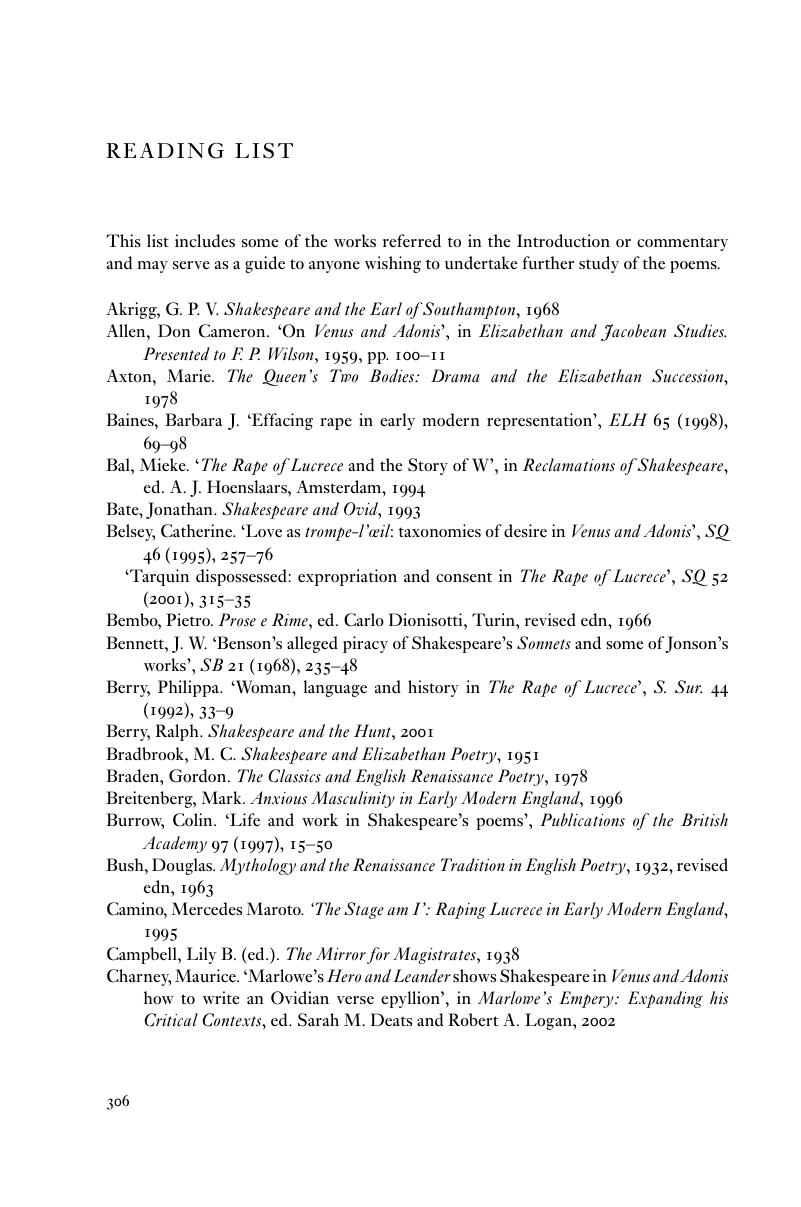 The Poems
The Poems Reading list
Published online by Cambridge University Press: 02 August 2019
Summary

- Type
- Chapter
- Information
- The PoemsVenus and Adonis, The Rape of Lucrece, The Phoenix and the Turtle, The Passionate Pilgrim, A Lover's Complaint, pp. 306 - 309Publisher: Cambridge University PressPrint publication year: 2006


